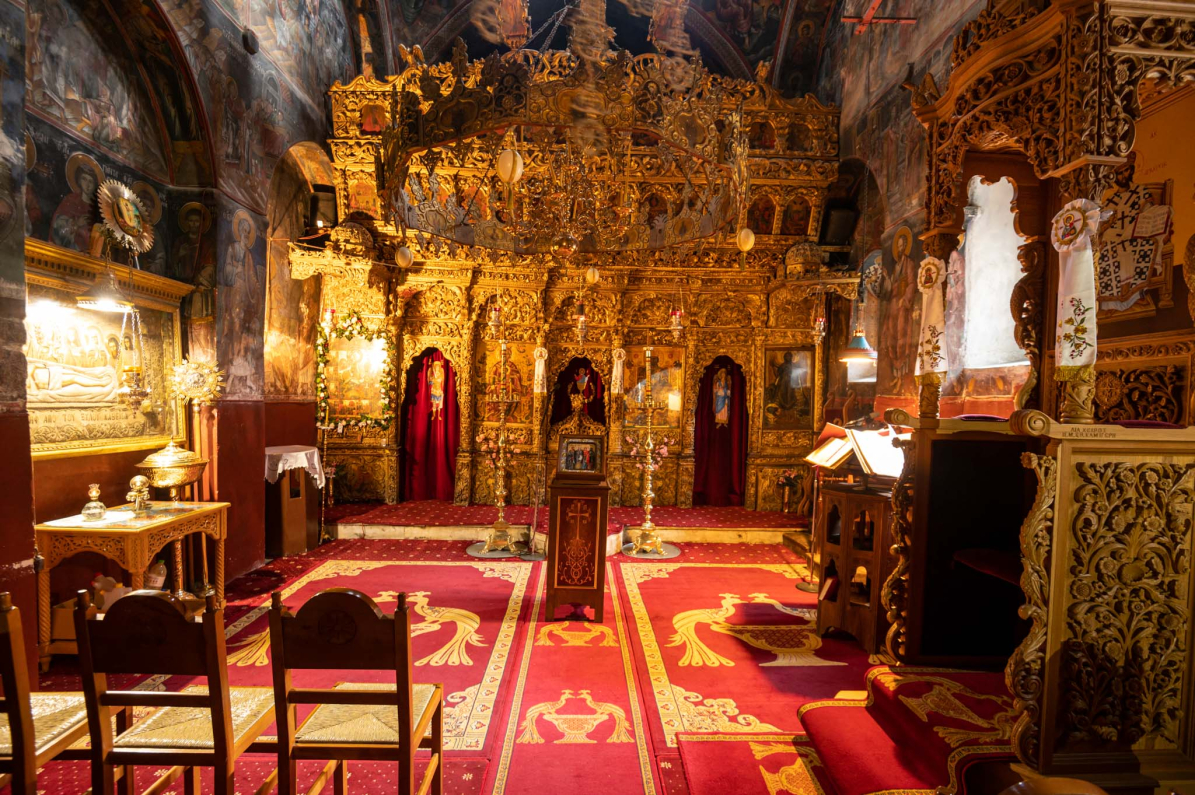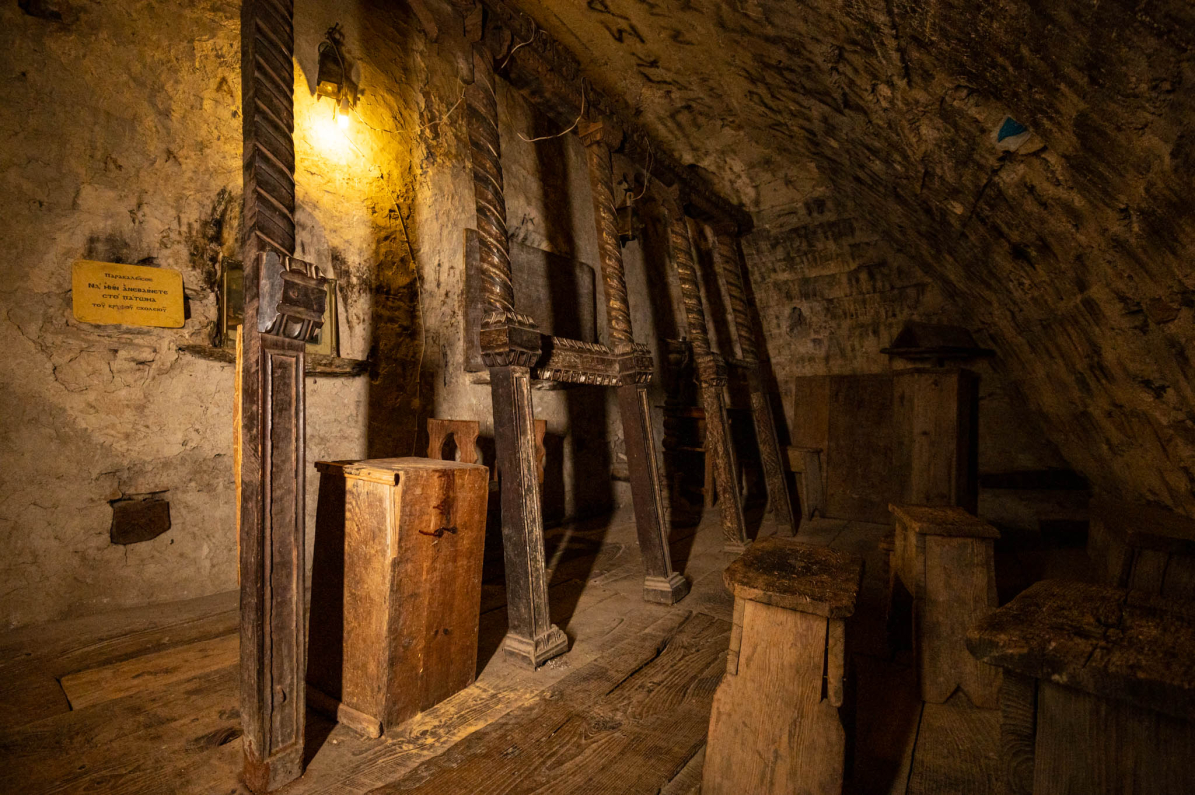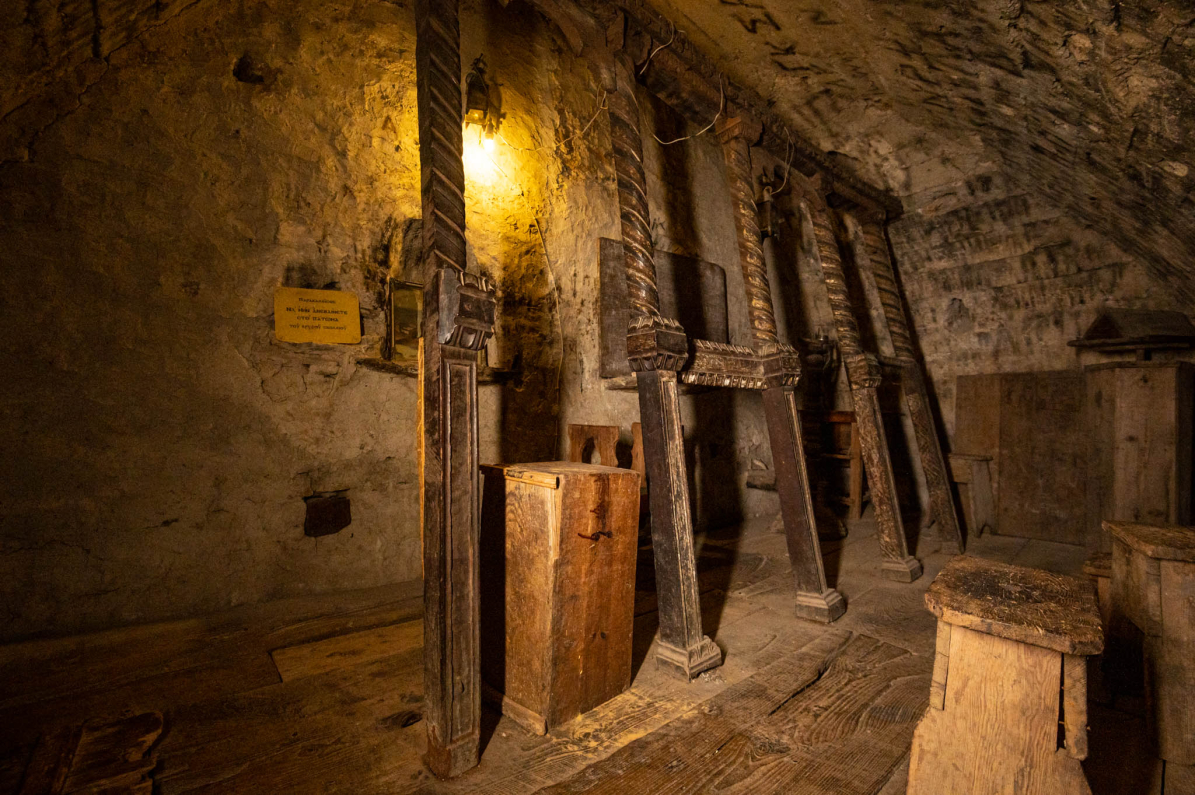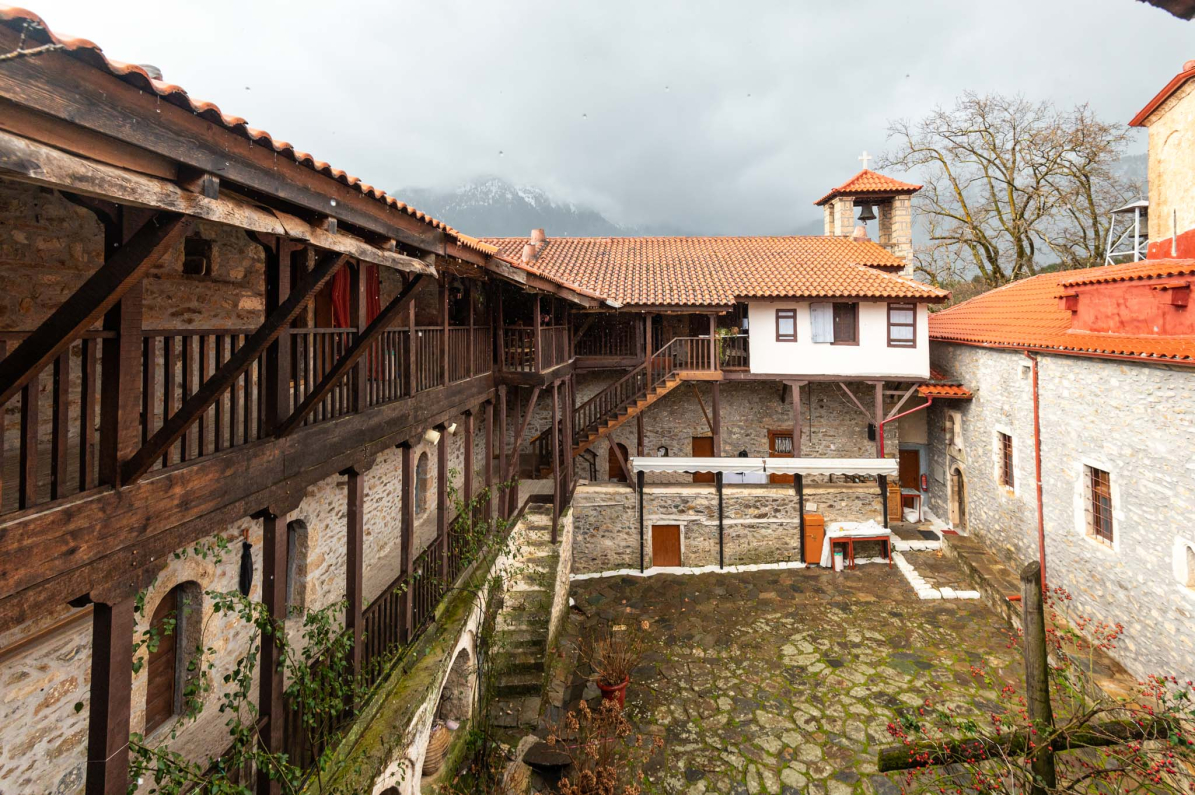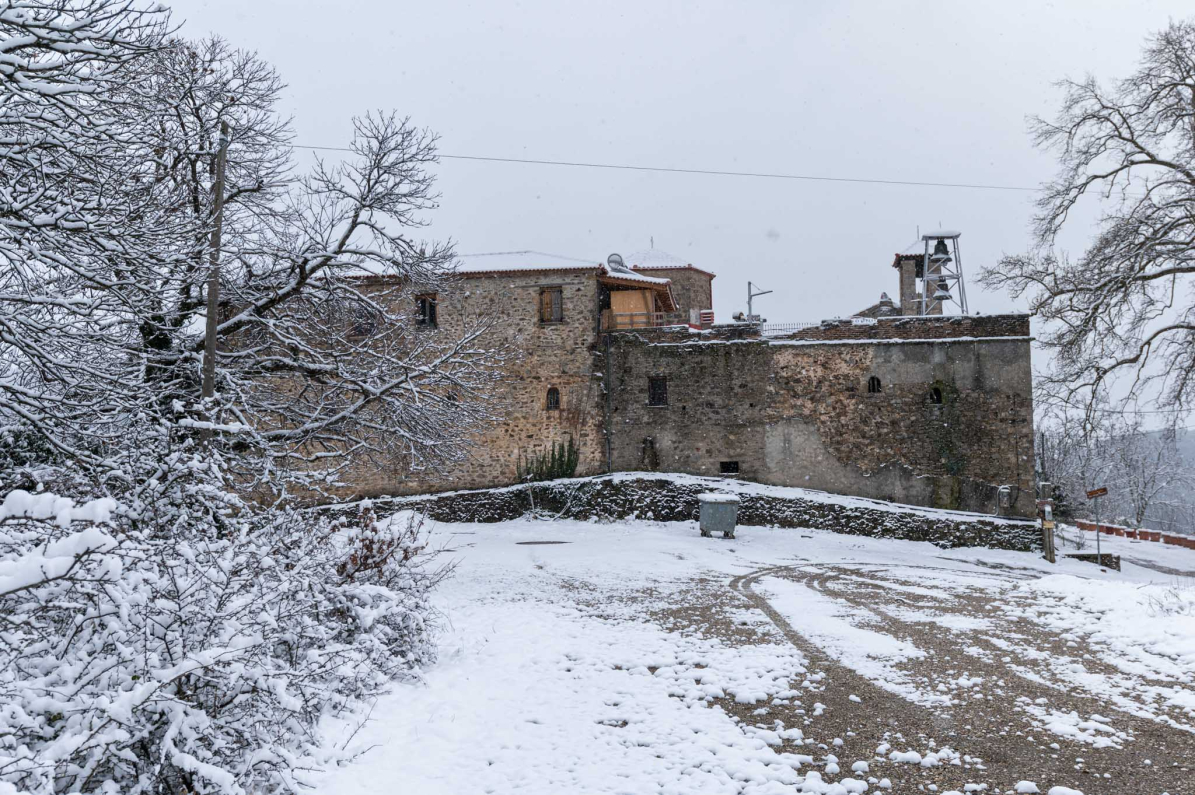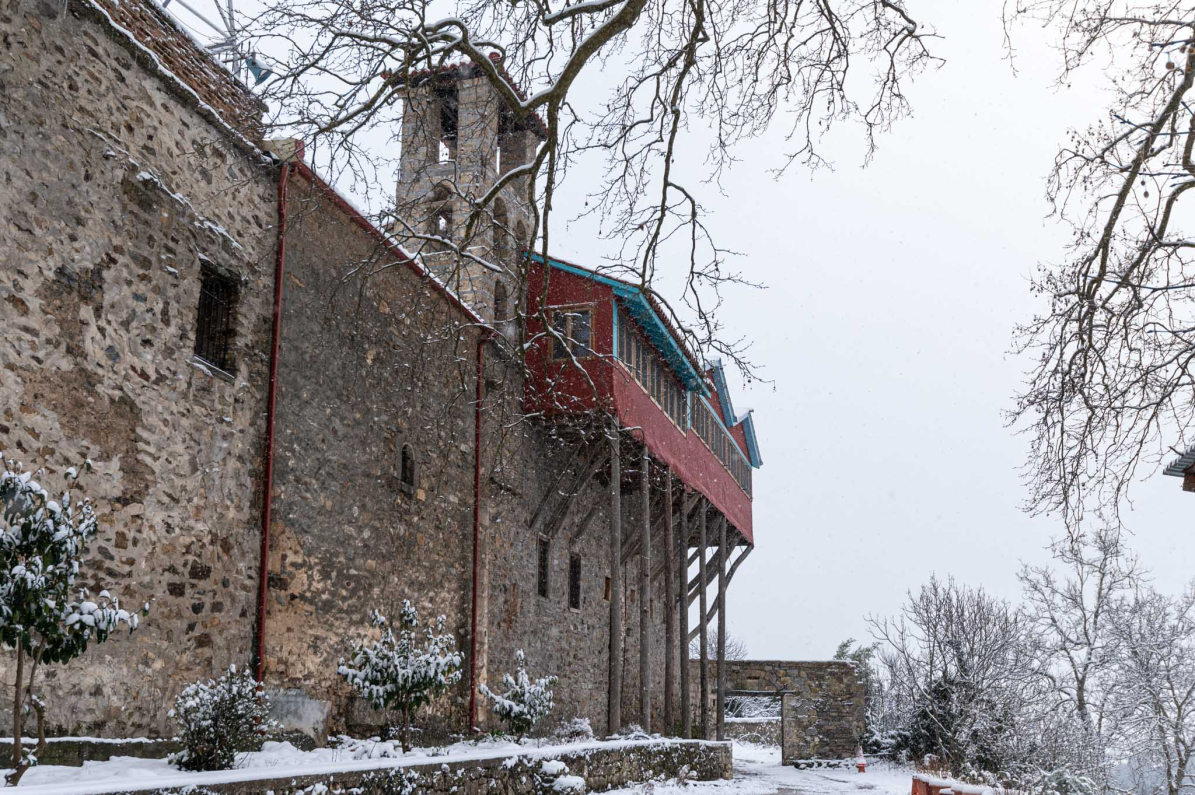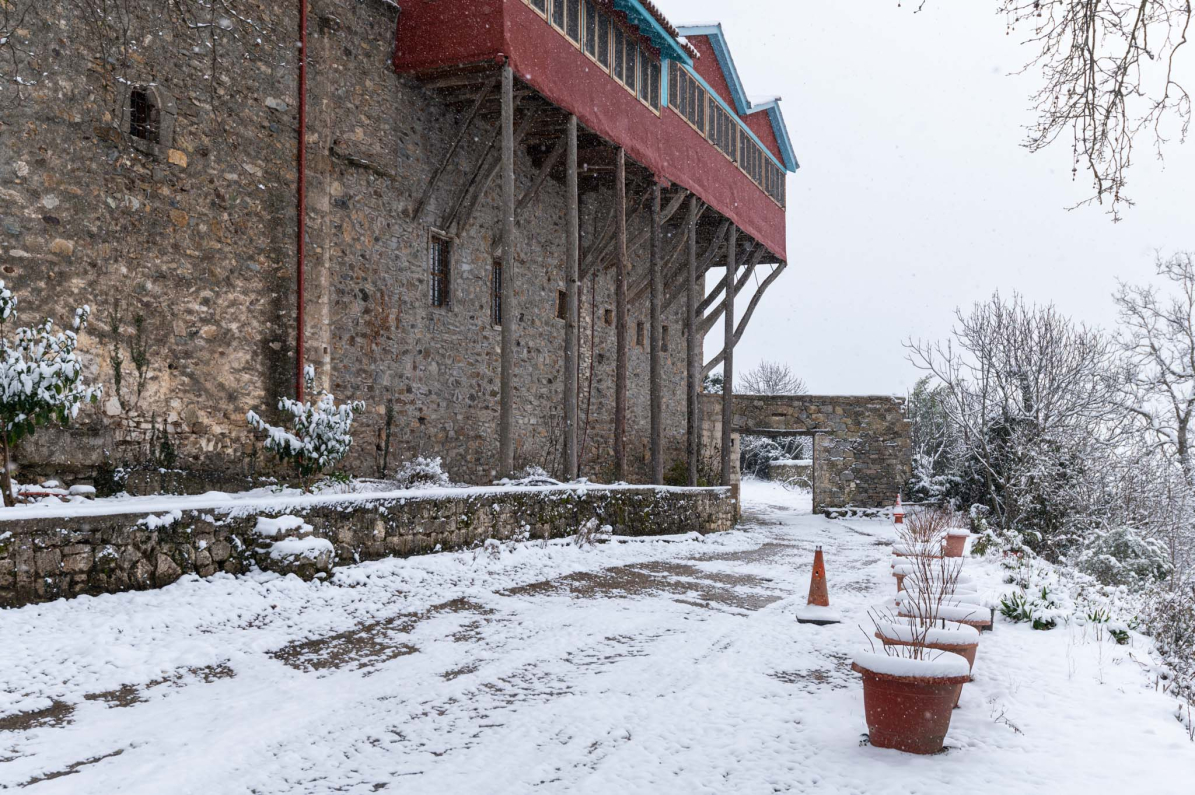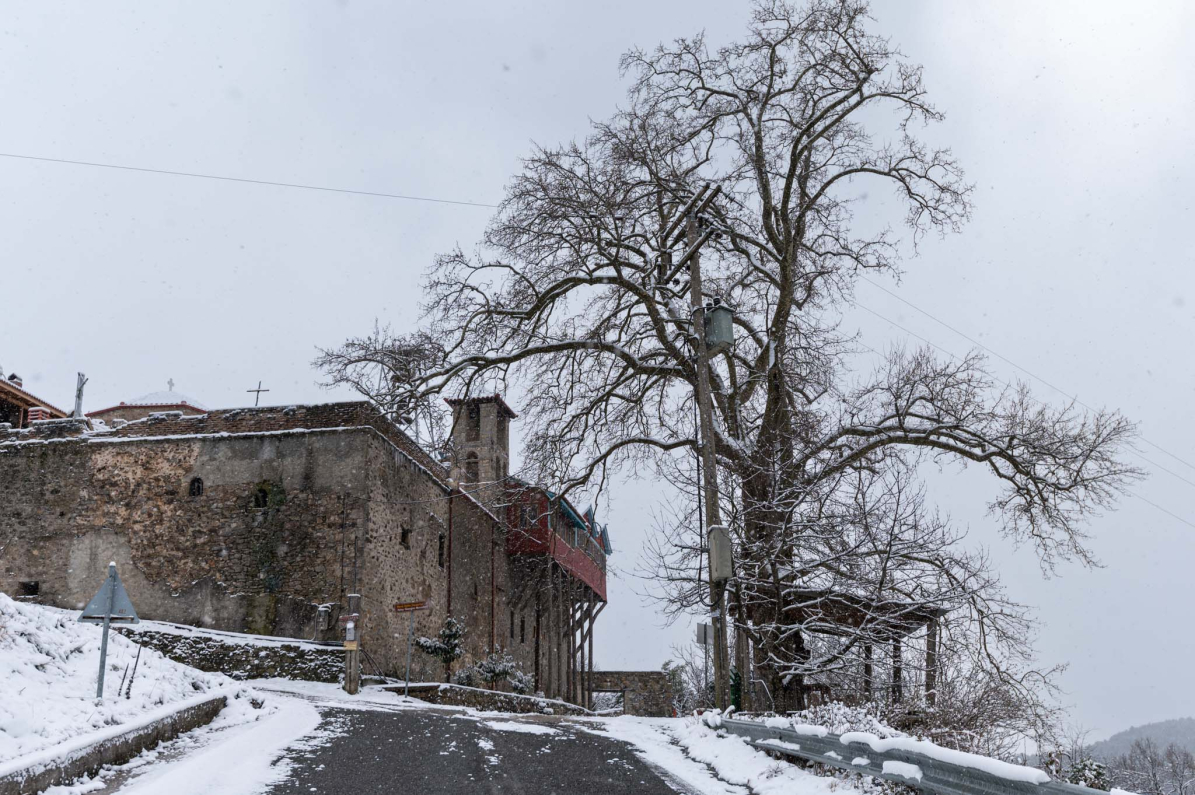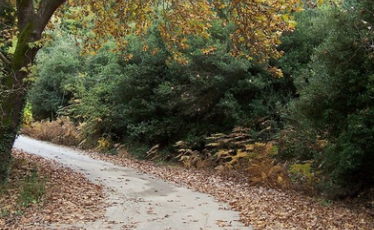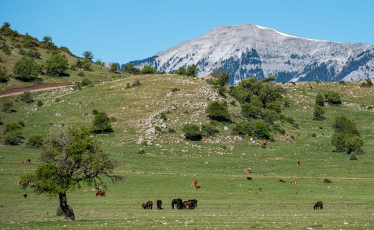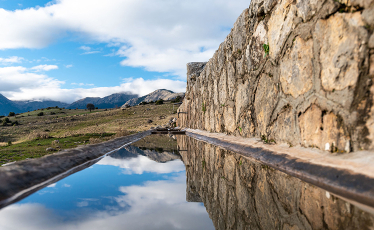Nestled at an altitude of 900 meters on the southern slopes of Mount Helmos, with a breathtaking view of the artificial Lake Doxa, the proud Monastery of "Saint George the Slayer" (Agios Georgios Feneos) stands surrounded by dense forests of oak, fir, and other deciduous and coniferous trees. Officially known as the Holy Monastery of Saint George Feneos, this unique Byzantine monument was built in 1693 and has been declared a protected site by the 6th Ephorate of Byzantine Antiquities.
The monastery was originally founded in the 13th century AD at the site where today stands the small chapel of Saint Phanourios, the so-called "Palaiomonastiro." However, frequent floods, culminating in a particularly destructive one in the mid-17th century, forced the monks to relocate the monastery to a higher location, where it stands today. Here, a majestic three-story complex was constructed, which was rebuilt from its foundations after a fire in 1754.
From the beginning, it was a stauropegic monastery, meaning it was directly under the authority of the Ecumenical Patriarchate, free from local ecclesiastical control. It maintained this status, sending an annual tribute of one "oka" (about 1.2 kg) of wax to the Patriarchate as a symbol of its allegiance, as evidenced by a 1797 Patriarchal sigillion (edict) issued by Patriarch Gregory V, which required the monastery to contribute 150 groschen annually.
The monastery's church, a domed basilica, is at the center of the courtyard, surrounded by a three-story building that houses the monks' cells, forming an impressive and grand structure. The church itself is richly decorated with exceptional frescoes, created by the painter Panagiotis from Ioannina between 1762 and 1768. These expressive, vivid images depict saints, the Virgin Mary, the life of Christ from his early years, and scenes from his Passion. The dome features a magnificent Pantocrator, while a large wooden chandelier, adorned with small, finely crafted icons, hangs below. The intricately carved iconostasis, created in 1762 and gilded by Panagiotis himself, stands as a remarkable example of ecclesiastical woodwork, depicting scenes from the Old and New Testaments.
Behind the narthex, in the western part of the church, a hatch leads to the so-called "Secret School," accessible today via a wooden ladder. According to local tradition, this hidden chamber was used for clandestine teaching during the Ottoman occupation.
Before the Greek War of Independence, the abbot Nathaniel, a member of the Filiki Eteria (Society of Friends), played a key role in preparing for the uprising. The monastery became a center for revolutionary activity, providing funds, livestock, and supplies for the struggle. It is said that the legendary Theodoros Kolokotronis used the monastery as a base during his campaigns, reinforcing the defenses of the region and punishing traitors and collaborators with "fire and axe."
Today, visitors to the Holy Monastery of Saint George are welcomed into a peaceful, idyllic setting, far removed from the turbulent history of the past. From the glass-enclosed balconies of the guesthouse, one can enjoy stunning views of Lake Doxa, the "Mouse Island" chapel of Saint Phanourios, and the entire Feneos plateau, framed by the dark green slopes of the Aroania Mountains and the rocky peaks of the surrounding mountains. Inside, the hospitable monks offer visitors a taste of their unique homemade rose preserve, served with cool water and a warm smile – a true expression of Greek monastic hospitality.
FAQ
Is special attire required for entry to the Monastery?
No

